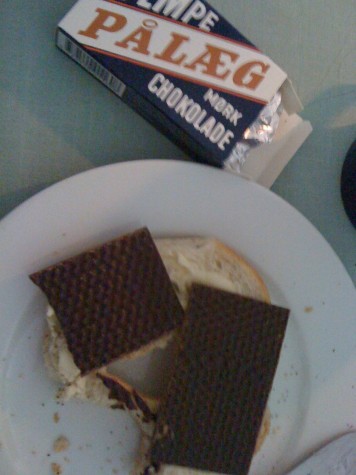“Tonight we’re going to have a typical Danish dinner,” she said. “It’s what everyone eats for Christmas, and of course when very important guests come!”
S— knows me well. She’d held off on shopping so that I could go to the supermarket and gawk at everything. The first thing she pointed out to me were these little crumbly things you put on top of pate for a smorrebrod.
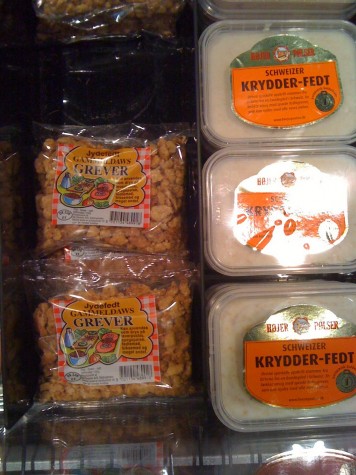
“Next to that,” she said, “is pork fat. Also for bread.”
And then she pointed out the pork cracklings. “But these are the bad ones. We need the fresh ones.”
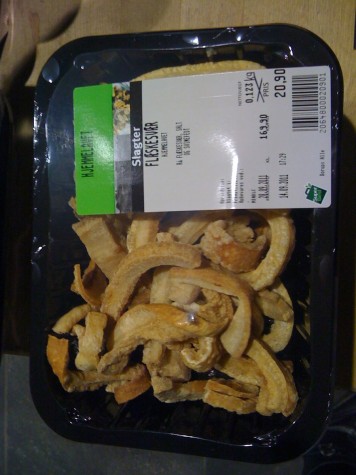
And then she bought the dinner: a giant pork loin-and-rib roast, with the skin still on and sliced thin–imagine a loaf of bread that has only been sliced down for the top inch.
So, it appeared that the No. 1 way in which Denmark distinguishes itself from its neighbors is through its love of pork. Right on.
After we got a bottle of wine from the very cheerful man running wine tastings–in the supermarket, in his handsome leather butcher’s apron…
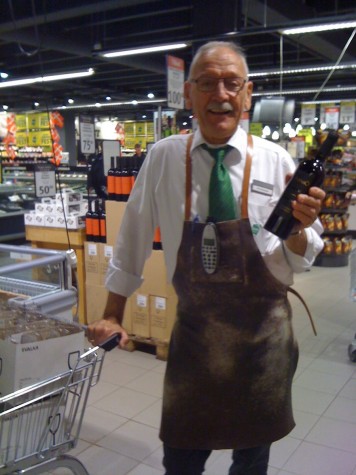
…we headed back home. Side dishes for the pork roast were red cabbage (sweetened with red-currant syrup) and potatoes. For dessert, a kind of cake that S—‘s son described as something only old ladies–and he–made.
Now, I’m going to tell you about this roast in detail, so that I don’t forget. I swear I will coerce a butcher into getting me such a roast at home, but it’s tricky, as they typically have already cut the skin off.
The key thing, S— says, is to salt the skin and fat very well, and to rub the salt down in between the fat slices.
Then you stick it in the oven on high heat, and after about 15 minutes, you start giving it the eye. You don’t want the cracklings to burn.
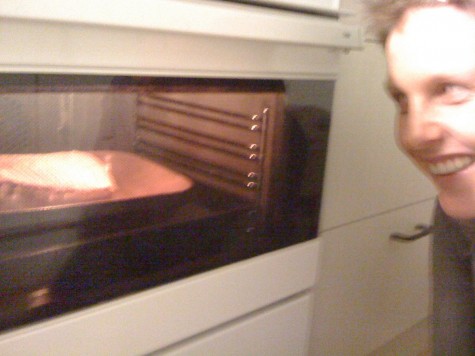
As soon as the skin properly crackles–it’s hard and a little bubbly–you cover it in foil and let the roast finish cooking.
If the crackling hasn’t behaved properly and crackled, but you had to cover it anyway because it was getting too dark, you can stick it up under the broiler at the end. This is what we did. Last-ditch effort, S— says, is to slice the fat and skin off and do it in the broiler separately, but no one really wants that.
Then you whip up a little gravy–or, as S— is wise to do, a lot of gravy, using all the juices from the roasting pan. And you boil the potatoes. And you uncover the cabbage that’s been simmering there with its currant syrup, vinegar and a pinch of sugar that you maybe stole from the coffee joint earlier in the day.
And then you slice up the roast and eat it.
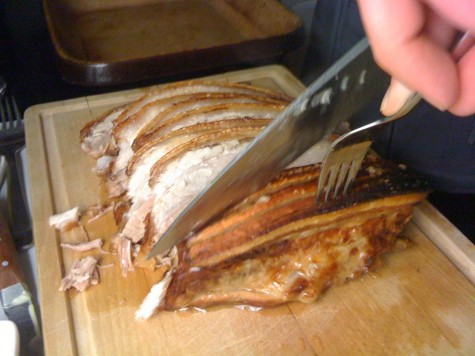
And then, after you’ve been coerced into eating more of the crackling than is rational, because, as S— warns, it’s no good the next day, and you will be very, very sad if you try to eat it the next day and know you should’ve just eaten it the night before when it was still hot and crispy…
After all that, you somehow manage to eat a slice of the kiksekage, the old-lady cake that’s just a genius kind of ice-box cake using crispy vanilla biscuits and chocolate ganache.
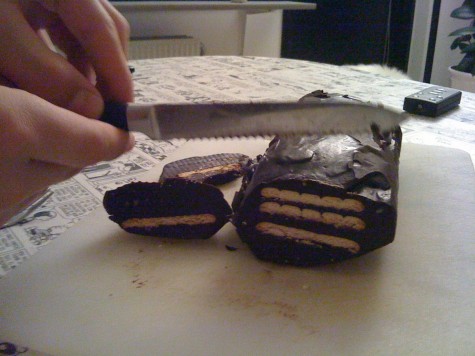
And then you roll into bed. And just as S— promises, you sweat quite a bit, due to your body working hard to digest all the fat. Presto–you wake up feeling Danish. And ready for a breakfast of chocolate slabs on poppyseed bread.
